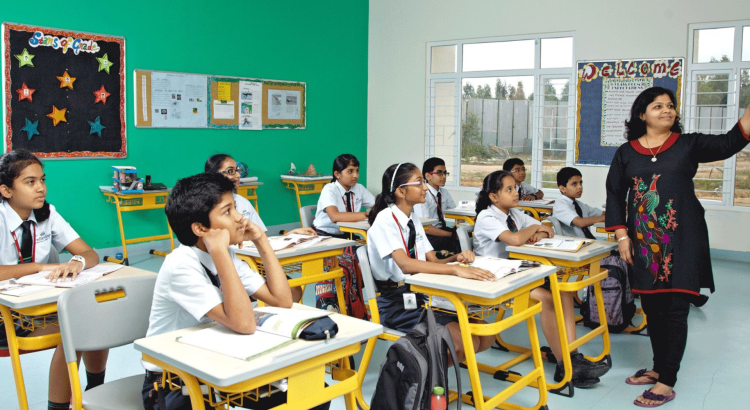
One of the major concerns of parents today is to identify the positive traits that can help them decide to choose the right curriculum for their children.
During our study years, we would have discovered several pros and cons through experience. Now we would like to ensure that our children experience better schooling and find greater future opportunities.
Even when the variety of options available is plenty, why should parents consider sending their children to IB schools or attending IBDP is the question.
What we learn at 5 years is a habit till 50 years. This is a known fact that children develop life habits at an early age itself. Children often find it taxing to take the excessive load on themselves at a later stage in life suddenly when faced with challenges. If they learn a pattern and discipline at an early age, they are more likely to develop strong characters and resilience to face challenges.
IBDP curriculum, we believe is so planned to provide a firm grounding for the holistic development of children during the crucial years of their childhood.
The IBDP curriculum guarantees a comprehensive education for the pupils by including a variety of topic areas. A strong academic foundation and in-depth learning in the student’s areas of interest are made possible by studying three higher level subjects.
Three other disciplines are supported by this at a standard level to give the learner a broad knowledge base. IBDP has a practical approach towards learning a wide range and depth of knowledge and is the basis for a university liberal arts education.
The teaching strategies used at Redbridge International Academy, the Best ib board school in bangalore, are distinctive in that they demand that students use the knowledge they acquire rather than just memorise it. It cultivates abilities in critical analysis, evaluation, and thought.
IBDP at Redbridge International Academy fosters learning interest and teaches students to put what they have learned to use. This encourages and teaches kids to be responsible, and improves their writing and research abilities. Additionally, it teaches children perseverance and patience, which come in handy when doing assignments and having to repeat experiments until they produce the desired outcomes. This also gets them ready for the challenging schoolwork at universities.
Of course, their teachers assist them in this learning process and the IBDP students of Redbridge International Academy, the best international school near Electronic City, encourage students to discover their learning style and pace, as you may have gathered by this point.
Each student conducts original research for his or her work, adds her perspective, and then presents it in his/her distinctive manner.
The integral parts of CAS (creativity, action, service), Theory of Knowledge (TOK), and the Extended Essay are what genuinely distinguish IBDP from another curriculum (EE). Students can expand on their extracurricular
involvement in the three main streams through CAS while also reflecting on their experiences. Students have the chance to positively impact their neighbourhood through the service strand, which helps them understand the significance of many social concerns. Participating in service projects with poor youngsters teaches them fundamental values. IB supports children’s emotional and personality development in this way.
Some of the students merge their enthusiasm for dancing, music, arts and CAS to make teaching underprivileged kids a more meaningful part of their learning. If students are applying to US universities, CAS has the added benefit of automatically creating a strong extracurricular profile.
The Extended Essay, a 4000 word research report on a specific topic has to be submitted as per IBDP. The students can choose a subject for a research paper, conduct the necessary primary or secondary research, and then presents it. This promotes and improves their research abilities. They are taught to think independently and create original work because the IB is quite tough on plagiarism. This instils a work ethic that permeates every facet of their existence.
Students learn a priceless lesson in time management and multitasking because they must balance all of their academic topics, TOK, CAS, and EE, as well as several graded assessments.
They are ready for college life in a variety of ways after two years of learning the IB way. They may choose the appropriate subjects for themselves thanks to their writing, research, and independent thinking skills, which serve as a foundation for college life. The IBDP has sparked their curiosity about learning, which not only fuels their enthusiasm for learning but also makes the transition to college much simpler.
Redbridge International Academy. The school is accredited with several laurels for providing an excellent infrastructure, teaching methodology and sports training.



